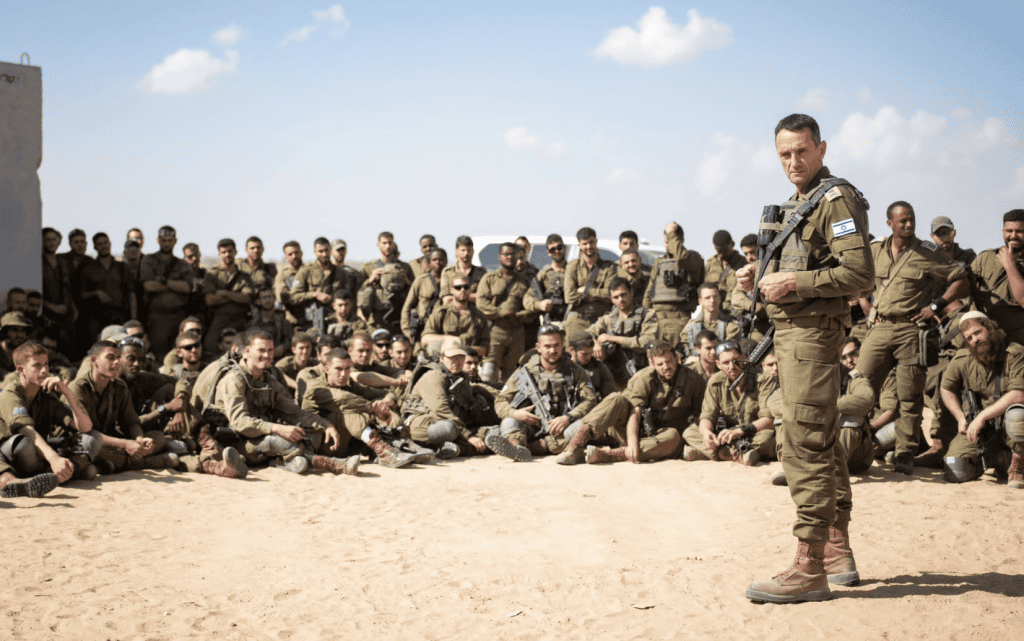
Seth Frantzman is reporting from Israel.
As part of a so-called ‘humanitarian truce,’ Israel and Hamas agreed to a pause in fighting in Gaza on Friday. Hamas agreed to release fifty hostages in groups of 12 or 13 a day, while Israel would release 150 Palestinian prisoners over the same span. Under the agreement, Hamas was supposed to release elderly women, mothers, and kids. Hamas was not supposed to split up families in the hostage release.
The return of the hostages is one of the central goals of Israel’s war in Gaza. Israel began the war after the Hamas attack, initially resorting to three weeks of airstrikes and targeted raids, followed by four weeks of ground offensive. The pause in fighting, which many call a ceasefire, began as the war entered 50 days, meaning Israel has now fought longer in Gaza than the Fifty Day war in 2014.
Israeli reports estimate there were 40 children held in Gaza before the deal to release several dozen of them. When Hamas attacked on Oct. 7, it targeted many border communities called kibbutzim. The terrorist group kidnapped many families, including mothers and their children, or in some cases extended families. For instance, the IDF noted on Sunday that “during the October 7th invasion and massacre, Hamas terrorists abducted hundreds of people from Israel, including 9-year-old Ohad Munder from Kibbutz Nir Oz.” On Friday, Ohad Mundar was released with his mother and grandmother. “Ohad and the other released hostages were then transferred via an IAF helicopter to a hospital to undergo medical assessment,” the IDF said.
The deal for the hostages has also involved separate deals Hamas made with Thailand and a decision by Hamas to release one hostage who has dual Russian citizenship. Many of the hostages in Gaza have dual nationality, and estimates say they hold citizenship in 25 different countries. On Friday, Hamas released 22 hostages, including 10 Thai citizens and one Filipino. The second day of the pause in fighting saw 17 hostages freed, four of whom were Thai citizens. The Thai citizens are foreign workers who live and work in Israeli communities near Gaza. Sixteen hostages were released on Sunday evening, including three Thai citizens and one Russian-Israeli dual citizen. Eleven additional hostages were supposed to be freed on Monday, November 27, and Israel and Hamas appeared ready to extend the pause in fighting.
During the four days of pause, Israel Defense Minister Yoav Gallant visited Gaza on Saturday. He entered from a naval vessel by sea and met with various IDF units in Gaza. He said that pressure on Hamas through ground operations had brought about the release of hostages. “When you increase the pressure even more, they are ready to come forward with an offer, and when you increase it even more, they are ready to come with an acceptable offer – that’s the whole method,” he said.
Gallant then went to the northern border on Sunday, where he visited Mount Dov, which overlooks Lebanon and Syria. It has been a flashpoint of tensions with Hezbollah. He met with members of the IDF 210th Division and said that over fifty days of fighting on the northern border, 100 Hezbollah terrorists have been injured or eliminated. Hezbollah has suffered the “destruction of dozens of observation posts, warehouses, bunkers and headquarters,” he said. In addition, Hezbollah forces had retreated from the front. Hezbollah-Israel clashes generally consisted of Hezbollah launching several rockets or an anti-tank missile and Israel responding. However, the overall attrition of Hezbollah members is now estimated at 100, which appears to indicate several killed or wounded each day of the clashes. Hezbollah refrained from attacking Israel once the ceasefire began. Nevertheless, Israelis who had been evacuated from the northern border and near Gaza were still living in hotels and guest houses 50 days into the war. This consists of 43 communities in the north, including one city, 54 communities along the Gaza border, and one city near Gaza.
Israel’s Defense Minister indicated that Israeli forces were organizing and preparing for the next round after the pause. The pause in fighting gave the IDF the chance to shed light on the operations of some units. For instance, the Shaldag naval commandos participated in fighting from the first day of the war, responding to infiltrations at several communities and then fighting around Shifa Hospital during the ground operation. The IDF also revealed the IDF K-9 OKetz unit lost four dogs fighting in Gaza. “Since the beginning of the fighting, Oketz (K-9) Unit fighters and dogs from the Marom Special Operations Brigade exposed approximately 50 booby-trapped explosive devices and dozens of weapons stockpiles. Female combat soldiers from the unit have played a significant role in supporting the efforts to locate findings regarding the Israeli hostages held captive in the Gaza Strip,” the IDF said.
Israeli officials vowed to return to fighting Hamas. Lt. Gen. Herzi Halevi said on Sunday that “we have created conditions for the framework for the release of the first group of children and mothers held hostage during this pause. When the framework is completed, we will return to our operations with determination for the continued release of the hostages and the complete dismantlement of Hamas.”







